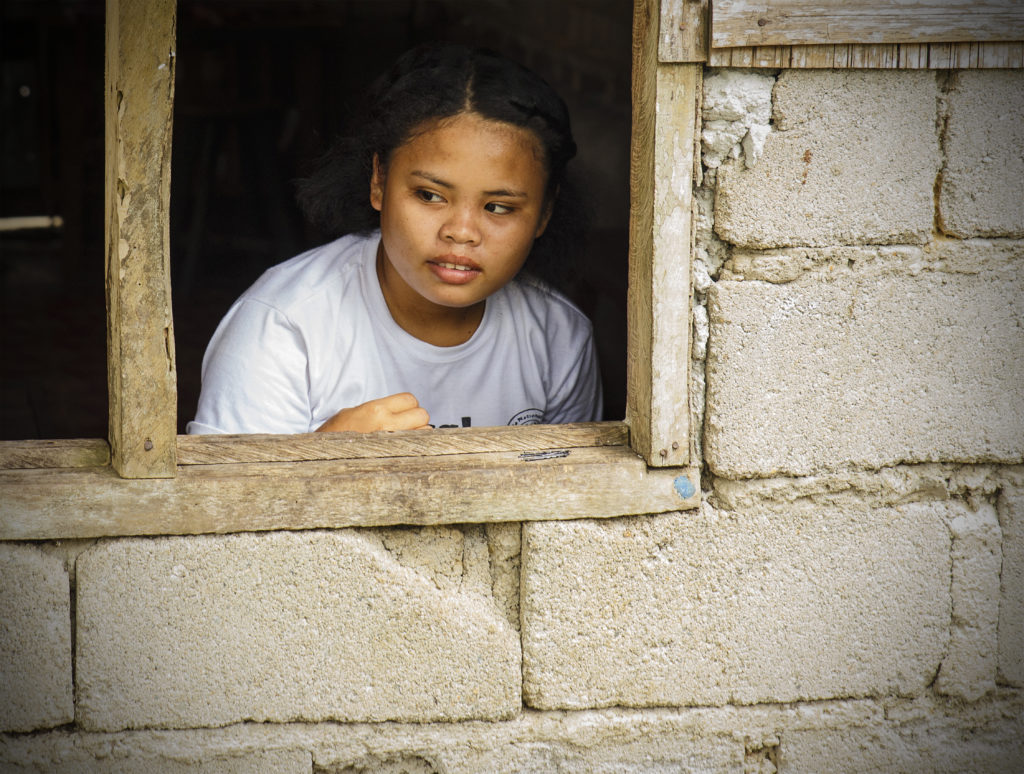Teenage pregnancy remains a pressing issue in the Philippines, with profound consequences for young mothers, their children, and society as a whole. The crisis disproportionately impacts out-of-school youth and girls from impoverished families, as poverty, a lack of education, and limited access to health services increase their vulnerability. Despite ongoing efforts, the country continues to grapple with high teenage pregnancy rates, particularly among girls aged 14 and under.
Scope of teenage pregnancy in the Philippines
The Philippines is facing a sharp rise in teenage pregnancies, making it a significant public health and development concern. The Commission on Population and Development warns that without strong intervention, the crisis could threaten national economic growth.
Despite some recent progress, the Philippines remains one of the countries with the highest teenage pregnancy rates in Asia. It ranks second in Southeast Asia, with over 500 girls aged 15 to 19 becoming mothers each day (Dela Pena, 2023; Save the Children Philippines, 2024a).
Even more concerning is the increasing number of pregnancies among girls under 15. Live births in the 10 to 14 age group rose from 2,411 in 2019 to 3,343 in 2023, marking a 6.6% increase in just four years. In 2023 alone, 17 young women under 20 had already given birth five or more times, and 38 girls under 15 experienced repeated pregnancies (Aning, 2025). The youngest recorded case involved a girl who became pregnant at just 8 years old and gave birth when she was 9 (Moaje, 2025).
Moreover, regional disparities continue to shape the landscape of teenage pregnancy. In Central Luzon, teenage pregnancies decreased by 9.7% between 2022 and 2023. However, cases among girls aged 14 and under continued to climb, making the region have the second-highest pregnancy rate in the country for this youngest age group (Carbungco, 2025). Other high-burden areas include Metro Manila, Calabarzon, Northern Mindanao, and Davao (Aning, 2025).
Why are so many Filipino girls becoming pregnant?
The rise in teenage pregnancies is primarily linked to limited access to comprehensive sexuality education (CSE). Despite being mandated in the K-12 curriculum since 2018, CSE remains inconsistently implemented, particularly in rural areas and faith-based schools (Espinosa, 2025). For CSE to be effective, it must also address attitudes toward sexuality, relationships, and gender (Elemia, 2024).
Cultural and religious beliefs further complicate the issue. In this predominantly Catholic country, these beliefs often influence attitudes toward sexuality education and contraception, sometimes resulting in limited open dialogue about reproductive health.
In addition, the likelihood of becoming a teenage mother increases significantly with poverty. Girls from low-income communities are more at risk of early pregnancy due to limited access to education, services, sexual and reproductive health care, and accurate information about their rights (Abad, 2025).

Further, legal barriers such as parental consent requirements prevent minors from accessing contraception and reliable information (United Nations Population Fund, 2020). A 2021 survey by the DKT Philippines Foundation revealed that only 13% of women of reproductive age were aware of emergency contraceptive pills (Tuazon, 2025).
Sexual violence and coercion have also contributed significantly to the rise in teenage pregnancies. Many young girls are pressured, often by older men, into sexual activity, increasing the risks of early pregnancy. Due to power imbalances, girls are left especially vulnerable to abuse, with many pregnancies involving men at least 10 years older, despite the age of consent being 16 (Elemia, 2024).
Finally, the lack of youth-friendly health services compounds the problem, as teenagers may be either unwilling or unable to seek support. At the same time, social media often normalizes teenage pregnancy and spreads myths about relationships and sexual behavior. Without proper sex education, young people frequently turn to unreliable sources (such as social media and pornography), leaving them more vulnerable to sexually transmitted infections and exploitation (Noel, 2025).
Impact of teenage pregnancy on girls’ lives
Teenage pregnancy poses serious risks to the health and well-being of young mothers and their children. Filipino girls under 15 are especially at risk, with their chances of dying from pregnancy-related complications being twice as high as those of women aged 20 to 30 (Save the Children, 2024). Their babies are also more vulnerable to having low birth weight and premature birth. In addition, teenage mothers face heightened risks of malnutrition, anemia, and sexually transmitted infections (Hello Doctor Philippines, n.d.).
Beyond physical health, teenage mothers often experience stigma and discrimination. Many are pressured into early marriages to protect family honor, which restricts their autonomy and increases emotional stress and health risks (Hello Doctor Philippines, n.d.). This social pressure also contributes to mental health issues such as depression, anxiety, and social isolation, and can discourage them from seeking essential support (Monis, 2020).
Economically, early motherhood tends to reduce a girl’s lifetime earning potential (Dela Pena, 2023). Many are forced to raise children without adequate financial or emotional support, trapping them in cycles of poverty (Save the Children Philippines, 2024a).
Education is one of the most significantly affected areas, with nearly 60% of early school leavers among girls linked to early motherhood (Untalan, 2025). The added burden of childcare responsibilities narrows their future opportunities and reinforces intergenerational cycles of disadvantage (Pinay Wise, 2024). Early pregnancy often prevents girls from completing basic education, leaving them without the skills needed for remunerative work and perpetuating intergenerational poverty (Reganit & Cervantes, 2023).
“My dream is to finish college so I can help my mother and secure my child’s future.”
– Anna, an 18-year-old, who became a mother at 15 (Elemia, 2024)
Current efforts to prevent teenage pregnancy in the Philippines
In response to rising teenage pregnancies, the Philippine government and civil society organizations have introduced several initiatives. One of the most notable is the ProtecTEEN program, launched in 2022 by the Department of Social Welfare and Development.
It provides psychosocial support, parenting guidance, educational aid, and livelihood assistance, and has expanded nationwide following successful pilots (De Layola, 2024). Also in 2022, the government raised the age of sexual consent from 12 to 16, aligning with global standards and allowing more teenage pregnancies to be legally recognized as statutory rape (Elemia, 2024).
To support long-term change, Senate Bill No. 1979, the Adolescent Pregnancy Prevention Bill, seeks to institutionalize CSE and allow minors to access reproductive health services without parental consent (Ramos, 2023). The bill promotes age-appropriate, accurate, and culturally sensitive content to help teens make informed decisions (Atienza, 2025).
Local initiatives show promising results. In Central Luzon, a drop in teenage pregnancies has been linked to integrated CSE and adolescent-friendly health facilities. In Palawan, the Roots of Health clinic has reached over 100,000 youth with culturally relevant CSE and contraceptive access (Santos, 2025a).
Organizations like Save the Children Philippines also play an important role. Through its “HEART to Heart” (Healthy, Empowered, and Responsible Teens) program, the organization empowers parents and caregivers to discuss sexuality and reproductive health with teens, fostering open communication across Luzon, Visayas, and Mindanao (Save the Children Philippines, 2024b).
“Looking back, I realize the significance of equipping my children with the tools to understand consent and fostering open dialogue.”
– Josie, a mother of an 11-year-old child from Eastern Visayas (Save the Children Philippines, 2024b)
Barriers to reducing teenage pregnancy rates in the Philippines
A major barrier is the legal requirement for parental consent for teens under 18 to access contraceptives. This deters many young people from seeking help. In addition, stigma and conservative beliefs, particularly in rural areas, make open discussions about sexuality difficult.
While CSE has been integrated into the K–12 curriculum since 2018, its implementation remains inconsistent due to limited teacher training and resistance from religious and cultural groups. Many schools lack the resources and support to deliver CSE effectively (Noel, 2025).
As a result, many teenagers turn to peers, social media, or pornography for information—sources that often perpetuate myths and misinformation (Noel, 2025). According to the Philippine Statistics Authority, 44% of girls and 39% of boys rely on such channels for sexual and reproductive health knowledge (Anaten, 2025).
What needs to be done to address teenage pregnancy in the Philippines?
- Improve access to contraceptives and youth-friendly services: Government health ministries, local health authorities, and non-governmental organizations (NGOs) working on adolescent health should increase access to contraceptives and services (particularly in rural areas), ensuring that these services are available without stigma or parental consent requirements (Santos, 2025a).
- Enhance CSE: Educational authorities, school boards, and policymakers should make CSE mandatory in schools, covering topics such as reproductive health, consent, and peer pressure, to equip young people with the knowledge needed to prevent teenage pregnancies (Atienza, 2025; Llaguno, 2025).
- Support teenage mothers: Local governments, social services, and NGOs should provide holistic support for young mothers, including flexible education, vocational training, and mental health services to help them build better futures for themselves and their children (Pinay Wise, 2024).
- Encourage parental involvement: Parents should foster open discussions about sexuality and reproductive health, providing accurate information to help teens make informed decisions and build self-worth (Pinay Wise, 2024; Save the Children Philippines, 2024b). They should also receive training and resources to improve their knowledge and communication skills, and be mobilized as role models to guide teenagers away from risky behaviors (Jaymalin & Servallos, 2025; Santos, 2025b).
- Empower girls and challenge gender norms: Policymakers, gender equality advocates, and educational institutions should promote gender equality and empower girls through education and leadership opportunities to break the cycles of early pregnancy and poverty.
- Strengthen legislation: Legislators, advocacy groups, and policymakers should pass the Adolescent Pregnancy Prevention Bill to ensure access to CSE and reproductive health services without requiring parental consent (Pinay Wise, 2024).

At Humanium, an NGO fighting for children’s rights worldwide, we believe that every teenager deserves access to CSE, reproductive health services, and a supportive environment that empowers them to make informed decisions about their future. We recognize that adolescence is a critical period for learning about one’s body, relationships, and rights, and that providing young people with accurate, age-appropriate information is essential for their health and well-being. We encourage you to join us in making a difference by volunteering, donating, or sponsoring a child.
Written by Or Salama
References:
Abad, M. (2025, January 24). Teens ‘really need help,’ say supporters of adolescent pregnancy prevention bill. Retrieved from Rappler at https://www.rappler.com/philippines/adolescent-pregnancy-prevention-bill-supporters-say-teenagers-need-help/, accessed on April 18, 2025.
Anaten, M. T. (2025, January 25). Over 3,000 babies born to girls aged 10-14 in 2023. Retrieved from Brigada News Philippines at https://www.brigadanews.ph/over-3000-babies-born-to-girls-aged-10-14-in-2023/, accessed on April 18, 2025.
Aning, J. (2025, January 17). Population body notes ‘alarming trend’ in teen pregnancies. Retrieved from The Philippine Daily Inquirer at https://plus.inquirer.net/news/population-body-notes-alarming-trend-in-teen-pregnancies/, accessed on April 18, 2025.
Atienza, K. A. T. (2025, January 16). Senate action on prevention bill pushed amid alarming rise in teenage pregnancies. Retrieved from BusinessWorld at https://www.bworldonline.com/the-nation/2025/01/16/647297/senate-action-on-prevention-bill-pushed-amid-alarming-rise-in-teenage-pregnancies/, accessed on April 18, 2025.
Carbungco, M. J. S. (2025, January 25). Teenage pregnancy down by 9.7% in Central Luzon. Retrieved from Philippine Information Agency at https://pia.gov.ph/teenage-pregnancy-down-by-9-7-in-central-luzon/, accessed on April 18, 2025.
De Layola, Z. (2024, April 22). DSWD issues guidelines for program preventing teenage pregnancy. Retrieved from Philippines News Agency at https://www.pna.gov.ph/articles/1223151, accessed on May 5, 2025.
Dela Pena, K. (2023, January 31). Numbers fall but PH teen pregnancies persist, mirror economic, learning gaps. Retrieved from Asian News Network at https://asianews.network/numbers-fall-but-ph-teen-pregnancies-persist-mirror-economic-learning-gaps/, accessed on May 3, 2025.
Elemia, C. (2024, August 30). Philippines urgently needs law to help stem adolescent pregnancies, experts say. Retrieved from BenarNews at https://www.benarnews.org/english/news/philippine/philippines-urgently-needs-law-to-help-stem-adolescent-pregnancies-experts-say-08302024143617.html, accessed on April 18, 2025.
Espinosa, A. (2025, February 8). A critical step towards addressing adolescent pregnancy in Philippines. Retrieved from Philstar at https://www.philstar.com/news-commentary/2025/02/08/2420164/critical-step-towards-addressing-adolescent-pregnancy-philippines, accessed on May 9, 2025.
Hello Doctor Philippines. (n.d.). Teen pregnancy in the Philippines: A national problem. Retrieved from Hello Doctor Philippines at https://hellodoctor.com.ph/sexual-wellness/teen-pregnancy-in-the-philippines/, accessed on April 19, 2025.
Jaymalin, M., & Servallos, N. J. (2025, January 27). DOH cool to anti-teen pregnancy bill. Retrieved from Philstar at https://www.philstar.com/headlines/2025/01/27/2417119/doh-cool-anti-teen-pregnancy-bill, accessed on April 18, 2025.
Llaguno, C. (2025, February 12). Addressing the teenage pregnancy crisis in the Philippines. Retrieved from HAPI Humanists at https://hapihumanist.org/2025/02/12/addressing-the-teenage-pregnancy-crisis-in-the-philippines/, accessed on April 18, 2025.
Moaje, M. (2025, March 24). CPD sounds alarm on rising pregnancies among 10-14 age group. Retrieved from the Philippines News Agency at https://www.pna.gov.ph/index.php/articles/1246696, accessed on April 18, 2025.
Monis, J. D. (2020, December). A Primer on Adolescent Pregnancy in the Philippines. Retrieved from PLCPD at https://www.plcpd.org.ph/wp-content/uploads/2021/04/A-Primer-on-Adolescent-Pregnancy-in-the-Philippines-2020.pdf, accessed on April 18, 2025.
Noel, S. (2025). In the Philippines, sex is taboo that’s why proper education matters. Retrieved from ExplainedPH at https://www.explained.ph/2025/04/in-the-philippines-sex-is-taboo-thats-why-proper-education-matters.html, accessed on April 18, 2025.
Pinay Wise. (2024, March 26). Addressing teenage pregnancy in the Philippines 2024. Retrieved from Pinay Wise at https://pinaywise.com/philippines-facts/addressing-teenage-pregnancy-in-the-philippines-2024/?srsltid=AfmBOopUKzSJh97b69A4rr1WwCjWFTmndFl7tDjafvdsRB1nDtmaruAI, accessed on April 18, 2025.
Ramos, M. (2023, October 27). Can new law help tackle Philippines’ teen pregnancy emergency? Retrieved from Context by TRF at https://www.context.news/socioeconomic-inclusion/can-new-law-help-tackle-philippines-teen-pregnancy-emergency, accessed on May 4, 2025.
Reganit, J. C., & Cervantes, F. M. (2023, September 5). House approves bill preventing teenage pregnancies. Retrieved from Philippines News Agency at https://www.pna.gov.ph/index.php/articles/1209273, accessed on May 4, 2025.
Santos, A. P. (2025a, February 4). Philippines: Sex ed bill targets rising teen pregnancies. Retrieved from DW at https://www.dw.com/en/philippines-sex-ed-bill-targets-rising-teen-pregnancies/a-71501177, accessed on April 19, 2025.
Santos, T. G. (2025b, February 3). More parental, local gov’t actions vs teen pregnancies urged. Retrieved from InquirerPlus at https://plus.inquirer.net/news/more-parental-local-govt-actions-vs-teen-pregnancies-urged/, accessed on May 4, 2025.
Save the Children. (2024, February 29). Jump of 35% in teen pregnancies in the Philippines prompts calls to increase sex education and health services. Retrieved from Save the Children International at https://www.savethechildren.net/news/jump-35-teen-pregnancies-philippines-prompts-calls-increase-sex-education-and-health-services, accessed on April 19, 2025.
Save the Children Philippines. (2024a, August 19). Save the Children Philippines Urges Senate to Swiftly Pass Adolescent Pregnancy Prevention Bill. Retrieved from Reliefweb at https://reliefweb.int/report/philippines/save-children-philippines-urges-senate-swiftly-pass-adolescent-pregnancy-prevention-bill, accessed on April 19, 2025.
Save the Children Philippines. (2024b, March 1). Stop adolescent pregnancies, teach children about reproductive health, says Save the Children Philippines. Retrieved from ReliefWeb at https://reliefweb.int/report/philippines/stop-adolescent-pregnancies-teach-children-about-reproductive-health-says-save-children-philippines, accessed on May 3, 2025.
Tuazon, E. M. (2025, January 12). Advocates call for better education, laws to combat teen pregnancy crisis. Retrieved from Philstar at https://www.philstar.com/headlines/2025/01/12/2413696/advocates-call-better-education-laws-combat-teen-pregnancy-crisis, accessed on April 19, 2025.
United Nations Population Fund. (2020, January). Eliminating Teenage Pregnancy in the Philippines. Retrieved from UNFPA at https://philippines.unfpa.org/sites/default/files/pub-pdf/UNFPA_Policy_Brief_Teenage_Pregnancy_(2020-01-24).pdf, accessed on May 3, 2025.
Untalan, S. (2025, January 24). Over 3K children born to mothers aged 10-14 years old in 2023 — PSA study. Retrieved from GMA News Online at https://www.gmanetwork.com/news/topstories/nation/933978/over-3k-children-born-to-mothers-aged-10-14-years-old-in-2023-psa-study/story/, accessed on April 19, 2025.


